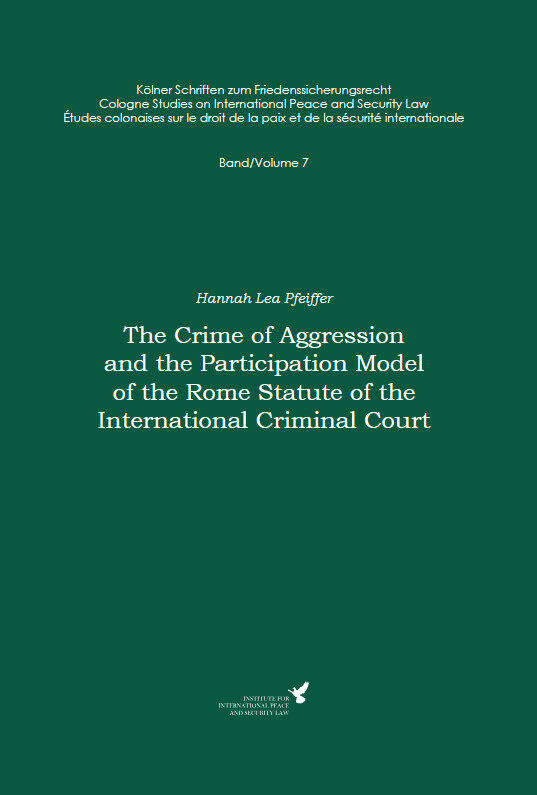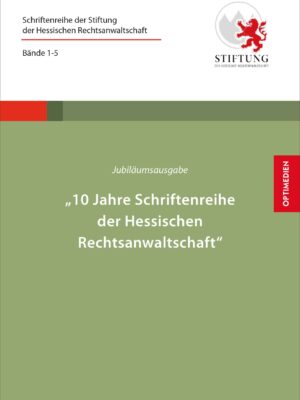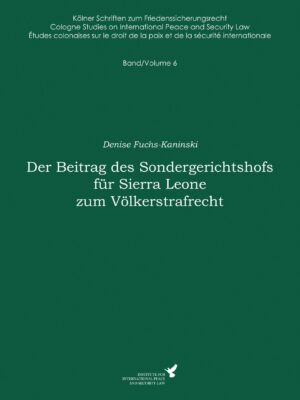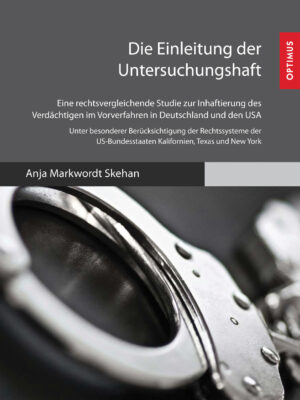The Crime of Aggression and the Participation Model of the Rome Statute of the International Criminal Court
This study examines the applicability of the general participation regime under Article 25(3) of the Rome Statute to the leadership-centered crime of aggression as defined in Article 8bis(1). Through a detailed analysis of the crime’s historical development and ICC jurisprudence, the author argues for a harmonised interpretation that maintains the leadership requirement while enabling a coherent distinction between perpetrators and participants based on classic control theory, thereby strengthening the ICC’s capacity to address serious violations of international peace.
49,90 € – 69,90 €
inkl. MwSt. zzgl. Versandkosten
After some of the major war criminals of the 20th century had been prosecuted for crimes against peace before the International Military Tribunals in Nuremberg and Tokyo after World War II, the so-called ‘mother of all crimes’ vanished from the international scene just as quickly as it had appeared before. This suggested that the conviction of high-ranking state officials for the illegitimate use of force against other countries would remain a one-off event in the history of mankind. It was not until 2010 that, at the Review Conference of the Rome Statute of the International Criminal Court, held in Kampala, Uganda, the Assembly of States Parties to the International Criminal Court agreed on a definition for the unlawful use of force by individual state leaders. Henceforth, Article 8bis (1) of the Rome Statute of the International Criminal Court (ICC Statute) criminalises the planning, preparation, initiation or execution, by a person in a position effectively to exercise control over or to direct the political or military action of a state, of an act of aggression which, by its character, gravity and scale, constitutes a manifest violation of the Charter of the United Nations.
However, the adoption of the definition of the crime of aggression in Article 8bis (1) ICC Statute leaves open a number of questions, inter alia, the crime’s compatibility with the General Part of the Statute. In particular, the applicability of the modes of participation as laid down in Article 25 (3) ICC Statute is open to question given that - unlike the other crimes punishable under the ICC Statute - the definition of the crime of aggression focuses on leadership conduct.
This work addresses the question of whether a combined reading of the two provisions can be meaningful. Furthermore, it aims to determine the circle of potential perpetrators of and participants in the crime and to provide a basis for a definition of each conduct verb of Article 8bis (1) ICC Statute. The examination is based on an in-depth analysis of both the historical development of the crime of aggression including its drafting process and the ICC’s jurisprudence on the Rome Statute’s participation model. The author argues in favour of the applicability of Article 25 (3) ICC Statute to Article 8bis (1), provided that the single conduct verbs are defined from the perspective of the leader-type principal perpetrator. This would enable the ICC to distinguish between perpetrators of and participants in the crime based on the ‘control-theory’ in its original form while rendering unnecessary subsequently developed variants of principal perpetration such as ‘perpetration through an organisation’ or ‘indirect co-perpetration’. A meaningful application of the General Part of the Rome Statute to the crime of aggression will ensure that the ICC is provided with an efficient instrument for responding to the most flagrant breaches of international peace.
| Auflage | 1 |
|---|---|
| EAN | 9783863761974 |
| ISBN | 978-3-86376-197-4 |
| Titel | The Crime of Aggression and the Participation Model of the Rome Statute of the International Criminal Court |
| Autor | |
| Reihe | |
| Band | 7 |
| Herausgeber | |
| Erscheinungsdatum | 31.12.2017 |
| Erscheinungsjahr | 2017 |
| Verlag | |
| Ausgabeart | Hardcover, Softcover |
| Sprache | englisch |
| Seiten | 324 |
| Medium | Buch, Buch (Hardcover), Buch (Softcover), E-Book |
| Produkttyp | Dissertation |
Produktsicherheit
Herstellerinformationen
Sievers & Partner
Erfurter Str. 10
96450 Coburg
Deutschland (Bayern)
Tel: +49 9561 6754754
E-Mail: info@elitebuch.com
Alle auf dieser Seite angebotenen Produkte entsprechen den geltenden gesetzlichen Vorschriften zur Produktsicherheit gemäß der Verordnung (EU) 2023/988 über die allgemeine Produktsicherheit (GPSR).
Für dieses Werk stehen verschiedene Exportformate zur Verfügung, die Sie flexibel nutzen können. Sie können die bibliografischen Angaben direkt in Ihr eigenes Literaturverwaltungsprogramm importieren (z. B. in EndNote, Zotero oder Citavi) oder die Daten im Rahmen eines Erwerbungsvorschlags bei einer oder mehreren Bibliotheken einreichen:
- MARC 21 wird vor allem von Bibliotheken und Katalogsystemen genutzt, beispielsweise von der Deutschen Nationalbibliothek oder Universitätsbibliotheken.
- BibTeX richtet sich insbesondere an Forschende und Studierende, die Literatur in LaTeX-Dokumenten verwalten und zitieren.
- RIS ist das gängige Austauschformat für Literaturverwaltungsprogramme wie Zotero, Citavi, EndNote oder RefWorks.
Zusätzlich stellt diese Seite COinS-Metadaten bereit, die Sie mit der Browser-Erweiterung Zotero Connector direkt in Ihre Literaturverwaltung übernehmen können.






